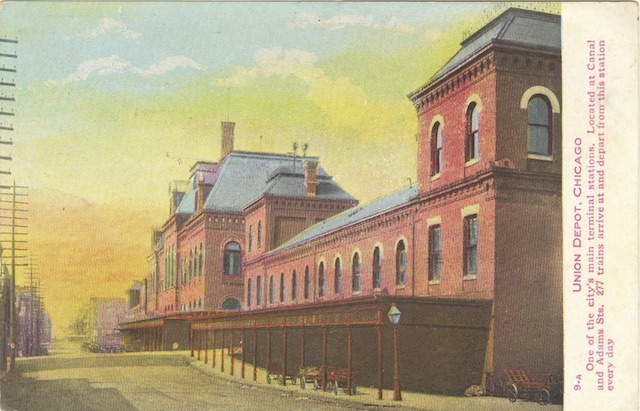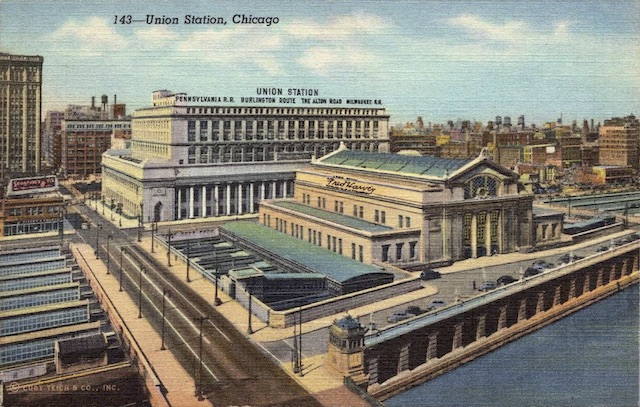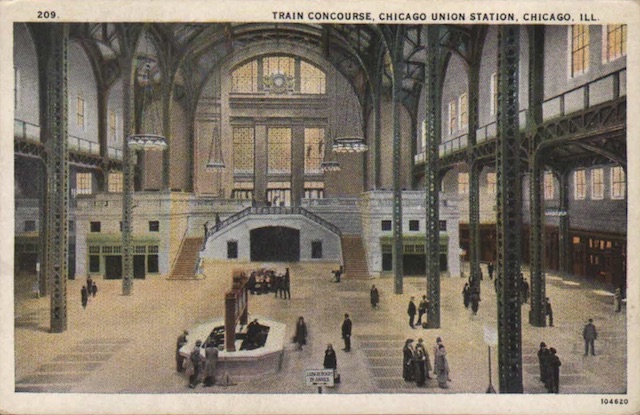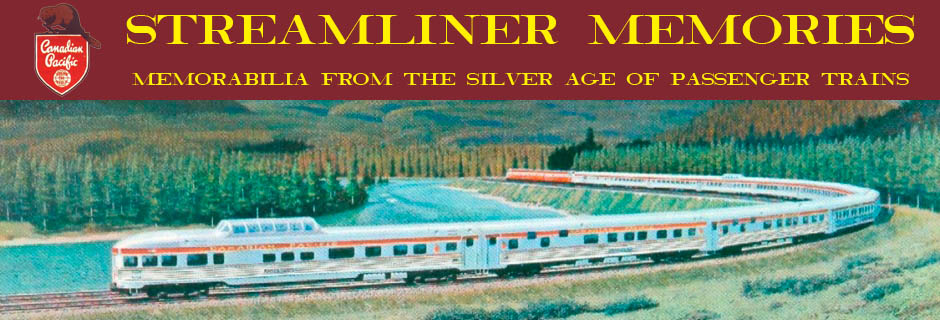Before Chicago Union Station opened in 1925, there was Chicago Union Depot, which opened in 1881. The depot served joint owners Pennsylvania, Burlington, Chicago & Alton, and what is now called the Milwaukee Road but was then called the St. Paul Road.
 Click image to download a 389-KB PDF of this postcard.
Click image to download a 389-KB PDF of this postcard.
These railroads had tracks between the Chicago River and Canal Street. Union Depot was a long, narrow building that stretched between Madison Street on the north and Adams on the south on the same side of Canal Street as the tracks.
Someone has written in Danish on the message part of this card: “Kjere Onkel: Gledelig Jul og et godt nytaar ønskes af din, Margaret Davidsen,” which translates to “Dear Uncle: I wish you a Merry Christmas and a Happy New Year, Margaret Davidsen.” However, the card was never postally used, as the address side just says, “Juleaften [Christmas Eve] 24-12-08,” indicating it was purchased in 1908.

The concourse is in the foreground and Union Station itself is in the background. Union Depot was previously to the right of the concourse. Click image to download a 401-KB PDF of this postcard.
The replacement station took more than twelve years to build and to avoid disruption it was located south of Union Depot on two full blocks between Adams and Jackson streets. Waiting rooms, restaurants, shops, ticket offices, and other offices were located in the large building west of Canal, while a large concourse providing stairway access to the tracks covered the block between Canal and the river.

The now-gone concourse was open to the street and could also be reached via an underground tunnel from the station. Click image to download a 139-KB PDF of this postcard.
When Pennsylvania Railroad, which was half owner of the station, realized it could make money from the air rights above the tracks, the railroads tore down the concourse in 1969 to make way for a large skyscraper now owned by Fifth Third Bank. Today, the station moves more people than ever before — 90 percent of them commuters — but most of the building stands empty because commuters aren’t interested in barber shops, fancy restaurants, and other amenities that once served long-distance travelers waiting to change trains in Chicago.
